
The Ministry of Munitions (軍需省, Gunjushō) was a cabinet-level ministry in the Empire of Japan, charged with the procurement and manufacture of armaments, spare parts and munitions to support the Japanese war effort in World War II.

The Ministry of Munitions (軍需省, Gunjushō) was a cabinet-level ministry in the Empire of Japan, charged with the procurement and manufacture of armaments, spare parts and munitions to support the Japanese war effort in World War II.
The Ministry of Munitions was created on 1 November 1943 [1] out of the Board of Planning of the Ministry of Commerce and Industry, which was subsequently abolished. With an increasing portion of Japan's industrial base and infrastructure damaged by Allied air raids, the Japanese government felt it necessary to unify the administration of munitions production to improve efficiency and to increase production levels, particularly that of military aircraft. The concept was inspired by the German Ministry of Armaments and Munitions under Fritz Todt and Albert Speer, which had successfully increased Nazi Germany's industrial production under similar adverse conditions, and was also an unsuccessful political move by the military to impose more control over the zaibatsu. [2]
Although Prime Minister Tōjō concurrently was first Minister of Munitions, the actual day-to-day running of the Ministry devolved to his deputy, Nobusuke Kishi. [3]
Key firms were designated as components of the nationalized Munitions Companies System, and managers were given positions as government officials. Production staff was regarded as conscript labor and was not allowed to quit, or go on strike. [4] State-controlled financial institutions provided working capital and subsidized the firms for any losses. [5]
The Ministry of Munitions was abolished in 1945, by the American occupation authorities, and its functions were absorbed into the modern Ministry of International Trade and Industry (MITI). [6]
Munitions Minister
| No. | Portrait | Name | Term of office | Cabinet | |
|---|---|---|---|---|---|
| 1 |  | Hideki Tōjō 東條 英機 | 1 November 1943 | 22 July 1944 | Tōjō |
| 2 |  | Ginjirō Fujiwara 藤原 銀次郎 | 22 July 1944 | 19 December 1944 | Koiso |
| 3 |  | Shigeru Yoshida 吉田 茂 | 19 December 1944 | 7 April 1945 | |
| 4 |  | Teijirō Toyoda 豊田 貞次郎 | 7 April 1945 | 17 August 1945 | Suzuki |
| 5 |  | Chikuhei Nakajima 中島 知久平 | 17 August 1945 | 26 August 1945 | Higashikuni |

Nobusuke Kishi was a Japanese bureaucrat and politician who served as prime minister of Japan from 1957 to 1960. He is remembered for his exploitative economic management of the Japanese puppet state of Manchukuo in China in the 1930s, imprisonment as a suspected war criminal following World War II, and provocation of the massive Anpo protests as prime minister, retrospectively receiving the nickname "Monster of the Shōwa era". Kishi was the founder of the Satō–Kishi–Abe dynasty in Japanese politics, with his younger brother Eisaku Satō and his grandson Shinzo Abe both later serving as prime ministers of Japan.
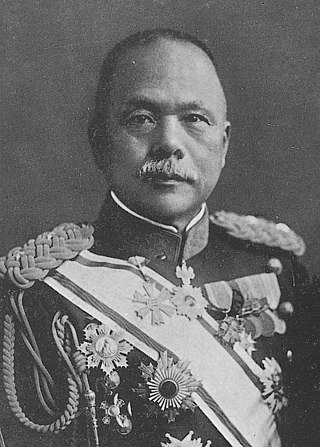
Kazushige Ugaki was a Japanese general in the Imperial Japanese Army and cabinet minister before World War II, the 5th principal of Takushoku University, and twice Governor-General of Korea. Nicknamed Ugaki Issei, he served as Foreign Minister of Japan in the Konoe cabinet in 1938.

Christopher Addison, 1st Viscount Addison,, was a British medical doctor and politician. A member of the Liberal and Labour parties, he served as Minister of Munitions during the First World War and was later Minister of Health under David Lloyd George and Leader of the House of Lords under Clement Attlee.
The Minister of Munitions was a British government position created during the First World War to oversee and co-ordinate the production and distribution of munitions for the war effort. The position was created in response to the Shell Crisis of 1915 when there was much newspaper criticism of the shortage of artillery shells and fear of sabotage. The Ministry was created by the Munitions of War Act 1915 passed on 2 July 1915 to safeguard the supply of artillery munitions. Under the very vigorous leadership of Liberal party politician David Lloyd George, the Ministry in its first year set up a system that dealt with labour disputes and fully mobilized Britain's capacity for a massive increase in the production of munitions.

The Ministry of the Navy was a cabinet-level ministry in the Empire of Japan charged with the administrative affairs of the Imperial Japanese Navy (IJN). It existed from 1872 to 1945.

The Army Ministry, also known as the Ministry of War, was the cabinet-level ministry in the Empire of Japan charged with the administrative affairs of the Imperial Japanese Army (IJA). It existed from 1872 to 1945.

The Imperial Japanese Navy General Staff was the highest organ within the Imperial Japanese Navy. In charge of planning and operations, it was headed by an Admiral headquartered in Tokyo.

Toyotarō Yūki, was a central banker in the Empire of Japan, serving as the 15th Governor of the Bank of Japan and twice as a cabinet minister.

The State General Mobilization Law, also known as the National Mobilization Law, was legislated in the Diet of Japan by Prime Minister Fumimaro Konoe on 24 March 1938 to put the national economy of the Empire of Japan on war-time footing after the start of the Second Sino-Japanese War.
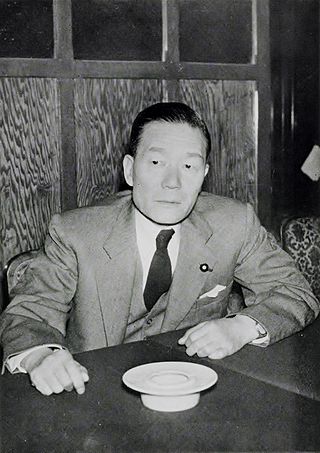
Etsusaburo Shiina was a career bureaucrat and politician. As Foreign Minister of Japan from 1964 to 1966 he played a pivotal role in diplomatic relations between Japan and the Republic of Korea.

The Government of Japan is the central government of Japan. It consists of legislative, executive and judiciary branches and functions under the framework established by the Constitution of Japan, adopted in 1947 and written by American officials in the Allied occupation of Japan after World War II. Japan is a unitary state, containing forty-seven administrative divisions, with the Emperor as its head of state. His role is ceremonial and he has no powers related to the Government. Instead, it is the Cabinet, comprising the Prime Minister and the Ministers of State, that directs and controls the government and the civil service. The Cabinet has the executive power and is formed by the prime minister, who is the head of government. The Prime Minister is nominated by the National Diet and appointed to office by the Emperor. The current cabinet is Second Ishiba Cabinet, was formed on 11 November 2024, is led by the prime minister Shigeru Ishiba who assumed office on 1 October 2024. The country has had a Liberal Democratic–Komeito coalition minority government since 2024.
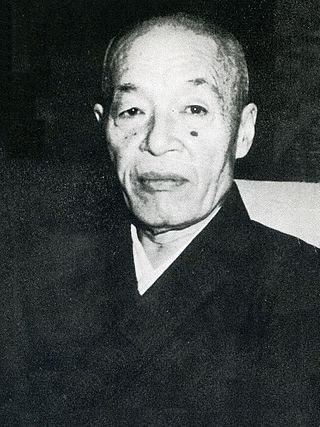
Shigeru Yoshida, was bureaucrat and politician in the Empire of Japan, serving as a member of the Upper House of the Diet of Japan, Chief Cabinet Secretary, governor of Fukuoka Prefecture and twice as a cabinet minister.

The Ministry of Agriculture and Commerce or Trade was a cabinet-level ministry in the government of the Empire of Japan from 1881 to 1925. It was briefly recreated as the Ministry of Agriculture and Commerce during World War II.

Kataoka Naoharu was a Japanese entrepreneur and politician during the prewar period. He served as Minister of Commerce and Industry (1924), Minister of Finance (1927), and a member of the House of Peers (1930-1934).
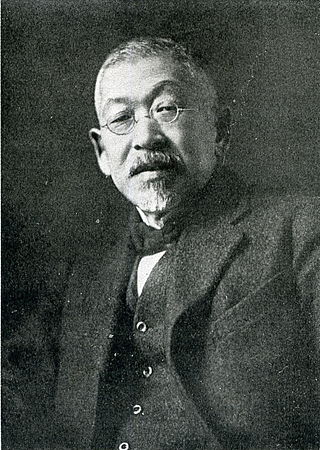
Nakahashi Tokugorō was a businessman, politician and cabinet minister in Taishō and early Shōwa period Japan. After serving as president of Osaka Shōsen Shipping Company, he entered politics and later served as a cabinet minister.
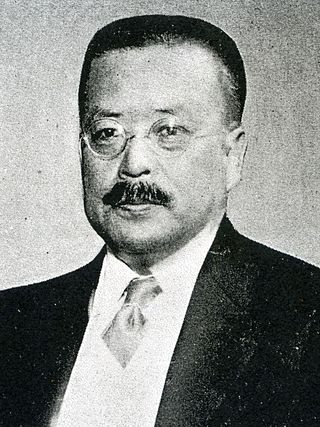
Takukichi Kawasaki was a politician and cabinet minister in the pre-war Empire of Japan.

Shinji Yoshino was a bureaucrat, politician, and cabinet minister in the government of the pre-war Empire of Japan, as well as in post-war Japan. He was the younger brother of political theorist Sakuzō Yoshino, a major proponent of Taishō democracy.

Tadaatsu Ishiguro was a bureaucrat, politician, and cabinet minister in the government of the pre-war Empire of Japan, as well as in post-war Japan.

The Ministry of Communications was a Cabinet-level ministry in the Empire of Japan. Its modern successors include the Ministry of Internal Affairs and Communications, Japan Post and Nippon Telegraph and Telephone

Hoshi Tōru was a Japanese politician and cabinet minister in Meiji period Japan.